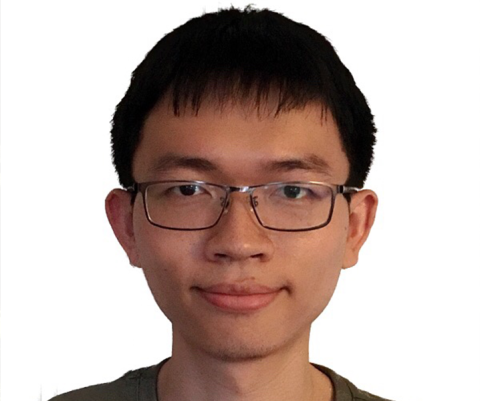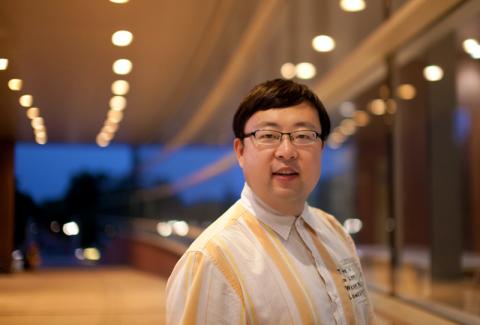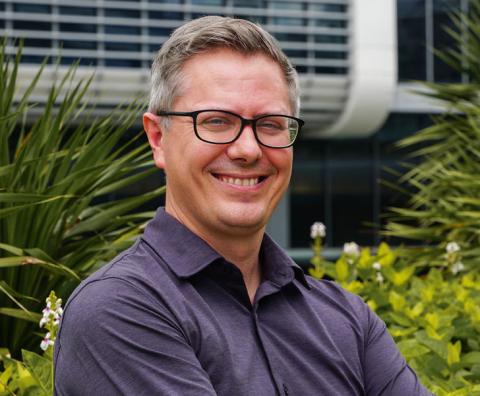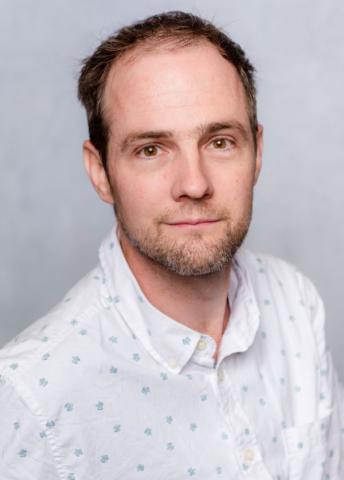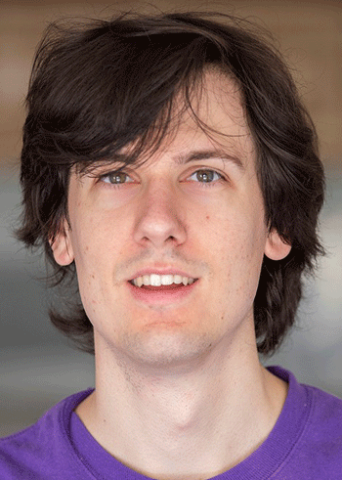Alan L. Goodman, Ph.D.
Education & Affiliations
Biography
Dr. Goodman’s research interests include Theoretical Nuclear Physics.
Recent Publications
A.L. Goodman, “The Romantic Revolt Against Rationalism: A Study In the Relation Between Science and Poetry,” China Media Research, 18(4), p. 80-105 (October 2022).
A.L. Goodman, “Cosmology: Where Religion Meets Physics,” China Media Research, 18(2), p. 80-96 (April 2022).
A.L. Goodman, “What is the Signature of T = 0 np Pairing in Rotating Nuclei?” in The Labyrinth In Nuclear Structure, edited by A. Bracco and C. Kalfas (American Institute of Physics, New York, 2004) p. 285.
A.L. Goodman, “T = 0 and T = 1 Pairing in Rotational States of the N = Z Nucleus 80 Zr,” Physical Review C63, 044325 (2001).
A.L. Goodman, “Shape Transitions In Hot Rotating Nuclei,” Nuclear Physics A687, 206c (2001).
A.L. Goodman, “T =0 and T = 1 Pairs in Yrast States of 80 Zr,” in Selected Topics on N = Z Nuclei, edited by D. Rudolph and M. Hellstrom (Lund University, 2001) p. 166.
A.L. Goodman, “T = 0 and T = 1 Pair Correlations in N = Z Nuclei With A = 76 – 96,” Physica Scripta T88, 170 (2000).
A.L. Goodman and M. Thoennessen, “Summary Of the Hot GDR Workshop,” RIKEN Review No. 23, 172 (1999).
A.L. Goodman, “Transition From Prolate Noncollective to Oblate Noncollective At the Second Shape Transition Temperature,” RIKEN Review No. 23, 73 (1999).
A.L. Goodman, “Proton-Neutron Pairing In Z = N Nuclei With A = 76 – 96,” Physical Review C60, 014311 (1999).
A.L. Goodman, “Neutron-Proton Pairing In N = Z Nuclei ,” in Nuclear Structure 98, edited by C. Baktash (American Institute of Physics, New York, 1999) p. 160.
A.L. Goodman, “Neutron-Proton Pair Correlations In N = Z Nuclei With A = 76 – 96,” in Highlights Of Modern Nuclear Structure, edited by A. Covello (World Scientific, Singapore, 1999) p. 401.
A.L. Goodman, “T = 0 and T = 1 Pair Correlations In N = Z Medium-Mass Nuclei,” Physical Review C58, R3051 (1998).
A.L. Goodman, “Expansion of Moment of Inertia at High Temperature,” Nuclear Physics A633, 223 (1998).
A.L. Goodman, “What Shape Is Generated By the Rotation of a Hot Spherical Nucleus?” in Progress in Particle and Nuclear Physics, edited by A. Faessler (Pergamon Press, Oxford, 1997) Vol. 38, p.173.
A.L. Goodman and T. Jin, “Second Shape Transition Temperature: Prolate Noncollective to Oblate Noncollective,” Zeitschrift fur Physik A358, 131 (1997).
A.L. Goodman and T. Jin, “Temperature Induced Shape Transition: Prolate Noncollective to Oblate Noncollective,” Nuclear Physics A611, 139 (1996).
A.L. Goodman and T. Jin, “Systematics of First and Second Shape Transition Temperatures in Heavy Nuclei,” Physical Review C54, 1165 (1996).
F.A. Dodaro and A.L. Goodman, “Statistical Orientation Fluctuations in 188 Os,” Nuclear Physics A596, 91 (1996).
A.L. Goodman, “Rotation of Hot Spherical Nucleus Creates Prolate Spheroid Rotating About Symmetry Axis,” in New Perspectives in Nuclear Structure, edited by A. Covello (World Scientific, Singapore, 1996) p.319.
A.L. Goodman, “Does Rotation of a Hot Spherical Nucleus Generate an Oblate or a Prolate Shape?” Nuclear Physics A592, 151 (1995).
A.L. Goodman, “Shape Transitions in 188 Os,” Nuclear Physics A591, 182 (1995).
A.L. Goodman, “Rotation Induced Prolate Spheroid Above the Critical Temperature,” Physical Review Letters 73, 416 (1994); 73, 1734 (1994).
G. Rosensteel and A.L. Goodman, “Kelvin Circulation in a Cranked Anisotropic Oscillator + BCS Mean Field,” International Journal of Modern Physics E: Nuclear Physics 3,1251 (1994).
A.L. Goodman, “Shapes of Hot Rotating Nuclei,” Proceedings of the International Symposium in Nuclear Structure, Beijing, China, 1993 (CIAE, Beijing, 1994) p. 40.
A.L. Goodman, “Multiple Shape Transitions in Hot Rotating 148 Sm Nuclei,” Proceedings of the International Conference on the Future of Nuclear Spectroscopy, Agia Pelagia, Crete, 1993, edited by W. Gelletly, C.A. Kalfas, R. Vlastou, S. Harissopulos, and D. Loukas (NCSR Demokritos, Athens, 1994 ) p. 272.
F.A. Dodaro and A.L. Goodman, “Three Dimensional Cranking at Finite Temperature,” Physical Review C49, 1482 (1994).
F.A. Dodaro and A.L. Goodman, “Dynamic Inertia Tensor for a Hot Rotating Nucleus,” Nuclear Physics A573, 47 (1994).
